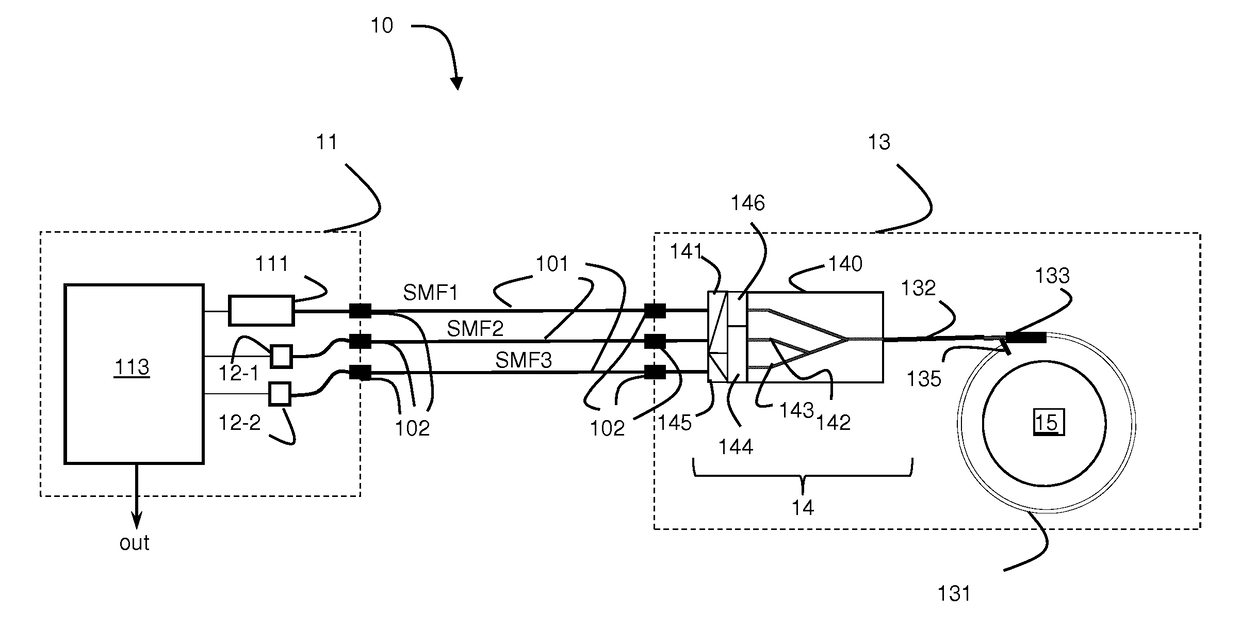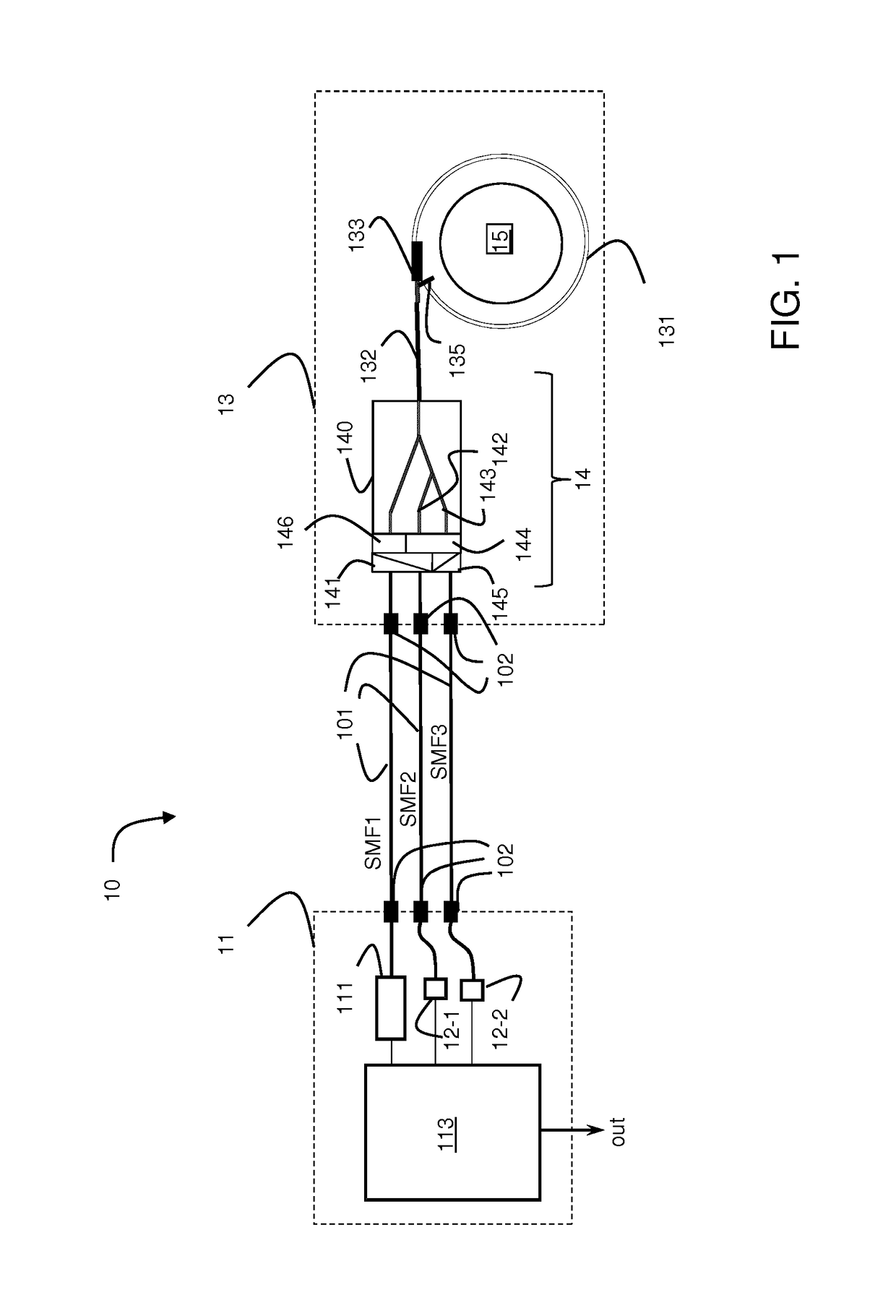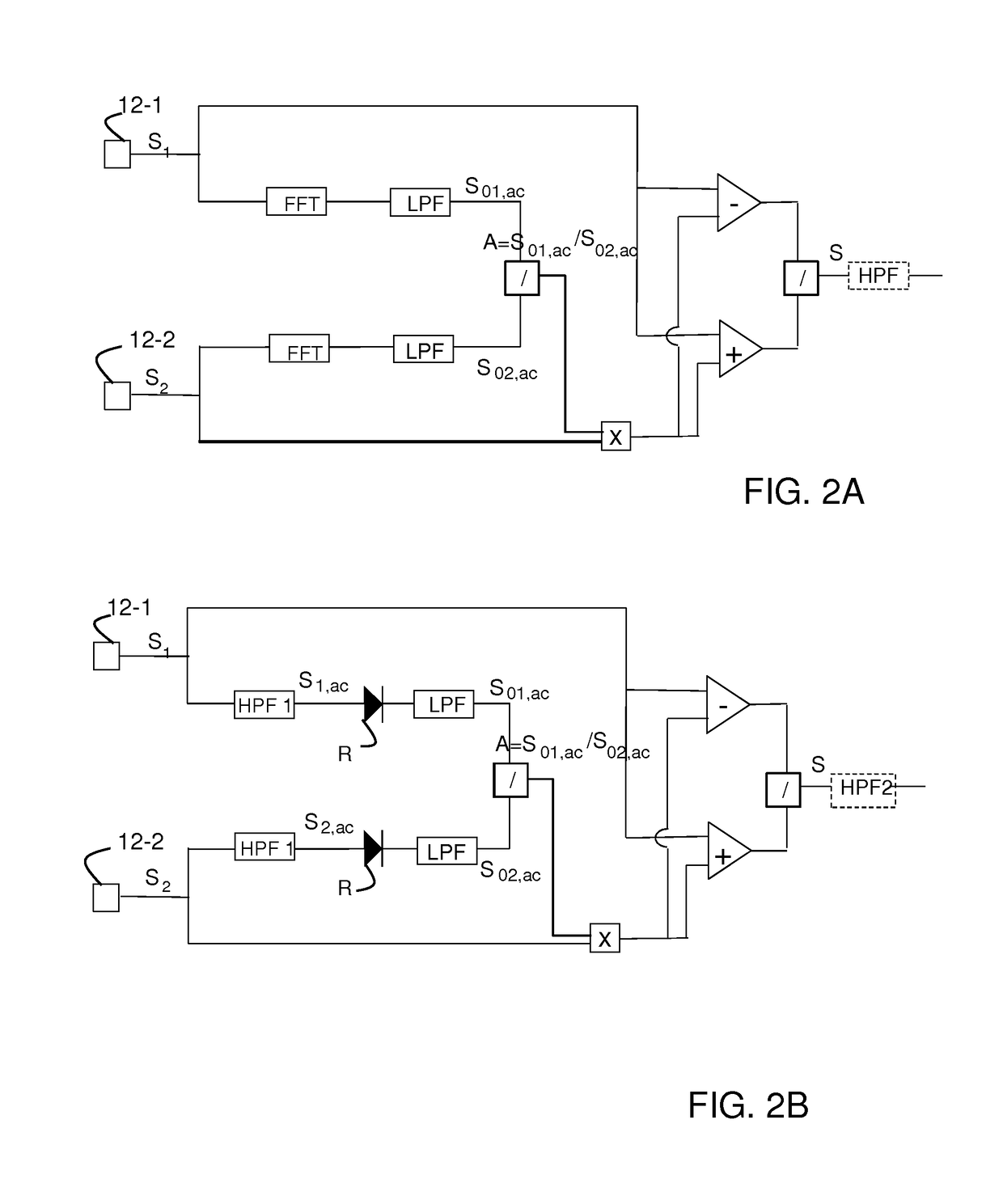Optical sensor
a technology of optical sensors and optical sensors, applied in the field of optical sensors, can solve the problems of limiting the achievable accuracy of this type of sensor, relatively sophisticated technology, and relatively expensive components of integrated optical modulators, and achieve the effect of increasing the accuracy of optical sensors
- Summary
- Abstract
- Description
- Claims
- Application Information
AI Technical Summary
Benefits of technology
Problems solved by technology
Method used
Image
Examples
Embodiment Construction
[0033]In FIG. 1 there is shown the example of a configuration of an optical current sensor using a static bias optical phase shift as signal detection scheme. For further details and possible modifications of the known elements of FIG. 1 reference can be made to [3].
[0034]As described further below such sensors with passive elements to introduce a bias phase shift can benefit from the various accuracy-increasing aspects of the present invention to be described below, such as signal processing comprising normalization and filtering of raw signals and additional temperature compensation means.
[0035]In the example of FIG. 1, the sensor 10 includes an opto-electronics module 11 which houses for example a broad-band light source 111, e.g. a superluminescent diode, two photo detectors 12-1, 12-2, and a signal processing unit 113 with power supply and other electronic components (not shown). It is worth noting that any connection between the opto-electronics module 11 and a sensor head 13 ...
PUM
 Login to View More
Login to View More Abstract
Description
Claims
Application Information
 Login to View More
Login to View More - R&D
- Intellectual Property
- Life Sciences
- Materials
- Tech Scout
- Unparalleled Data Quality
- Higher Quality Content
- 60% Fewer Hallucinations
Browse by: Latest US Patents, China's latest patents, Technical Efficacy Thesaurus, Application Domain, Technology Topic, Popular Technical Reports.
© 2025 PatSnap. All rights reserved.Legal|Privacy policy|Modern Slavery Act Transparency Statement|Sitemap|About US| Contact US: help@patsnap.com



